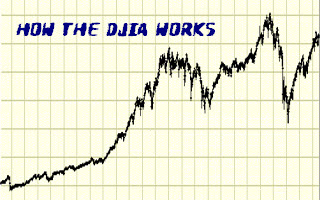“Arithmetic, Population and Energy” may very well be one of the most important videos you’re likely to watch. While the math behind the exponential function is relatively simple and straight forward, its repercussions in markets, for resources, and for society as a whole are widely misunderstood or outright ignored. In fact, in relation to population growth alone, the Chinese seem to be the only ones who “get it”. Ironically, their distasteful “one child per family” population policy has done more to conserve energy, reduce pollution, and conserve resources than pretty much any other, more “politically-correct”, initiatives taken to date. Lack of understanding of these concepts is also one of the most basic ways politicians and governments (in conjunction with the media) mislead its citizens. “In Growth We Trust” – All our problems stem from Exponential Growth. For those who invest in the stock market, it’s also one of the most important key concepts to understand for those interested in generating substantial returns. And of course, its ramifications for our future are immeasurable and incomprehensible if not directly addressed sooner than later.
A few notable quotes:
“It is the nature of the human species to reject what is true but unpleasant and to embrace what is obviously false but comforting.” — H.L. Mencken’s social philosophy
“Thinking is very upsetting. It tells you things you’d rather not know.” – cartoon
“The Greatest Shortcoming of the Human Race is our inability to Understand the Exponential Function.” — Dr. Albert A. Bartlett
Complete YouTube Playlist for Parts 1 to 8
Complete Transcript:
Thank you very much, Hugh.
It’s a great pleasure to be here, and to have a chance just to share with you some very simple ideas about the problems we’re facing. Some of these problems are local, some are national, some are global.
They’re all tied together. They’re tied together by arithmetic, and the arithmetic isn’t very difficult. What I hope to do is, I hope to be able to convince you that the greatest shortcoming of the human race is our inability to understand the exponential function.
Well, you say, what’s the exponential function?
This is a mathematical function that you’d write down if you’re going to describe the size of anything that was growing steadily. If you had something growing 5% per year, you’d write the exponential function to show how large that growing quantity was, year after year. And so we’re talking about a situation where the time that’s required for the growing quantity to increase by a fixed fraction is a constant: 5% per year, the 5% is a fixed fraction, the “per year” is a fixed length of time. So that’s what we want to talk about: its just ordinary steady growth.
Well, if it takes a fixed length of time to grow 5%, it follows it takes a longer fixed length of time to grow 100%. That longer time’s called the doubling time and we need to know how you calculate the doubling time. It’s easy.
You just take the number 70, divide it by the percent growth per unit time and that gives you the doubling time. So our example of 5% per year, you divide the 5 into 70, you find that growing quantity will double in size every 14 years.
Well, you might ask, where did the 70 come from? The answer is that it’s approximately 100 multiplied by the natural logarithm of two. If you wanted the time to triple, you’d use the natural logarithm of three. So it’s all very logical. But you don’t have to remember where it came from, just remember 70.
I wish we could get every person to make this mental calculation every time we see a percent growth rate of anything in a news story. For example, if you saw a story that said things had been growing 7% per year for several recent years, you wouldn’t bat an eyelash. But when you see a headline that says crime has doubled in a decade, you say “My heavens, what’s happening?”
OK, what is happening? 7% growth per year: divide the seven into 70, the doubling time is ten years. But notice, if you want to write a headline to get people’s attention, you’d never write “Crime Growing 7% Per Year,” nobody would know what it means. Now, do you know what 7% means?
Let’s take an example, another example from Colorado. The cost of an all-day lift ticket to ski at Vail has been growing about 7% per year ever since Vail first opened in 1963. At that time you paid $5 for an all-day lift ticket. What’s the doubling time for 7% growth? Ten years. So what was the cost ten years later in 1973? (showing slides of rapidly increasing prices) Ten years later in 1983? Ten years later in 1993? What was it last year in 2003, and what do we have to look forward to? (shows “2003: $80; 2013: $160; 2023: $320; audience laughter)
This is what 7% means. Most people don’t have a clue. And how is Vail doing? They’re pretty much on schedule.
So let’s look at a generic graph of something that’s growing steadily. After one doubling time, the growing quantity is up to twice its initial size. Two doubling times, it’s up to four times its initial size. Then it goes to 8, 16, 32, 64, 128, 256, 512, in ten doubling times it’s a thousand times larger than when it started. You can see if you try to make a graph of that on ordinary graph paper, the graph’s gonna go right through the ceiling.
Now let me give you an example to show the enormous numbers you can get with just a modest number of doublings.
Legend has it that the game of chess was invented by a mathematician who worked for a king. The king was very pleased. He said, “I want to reward you.” The mathematician said “My needs are modest. Please take my new chess board and on the first square, place one grain of wheat. On the next square, double the one to make two. On the next square, double the two to make four. Just keep doubling till you’ve doubled for every square, that will be an adequate payment.” We can guess the king thought, “This foolish man. I was ready to give him a real reward; all he asked for was just a few grains of wheat.”
But let’s see what is involved in this. We know there are eight grains on the fourth square. I can get this number, eight, by multiplying three twos together. It’s 2x2x2, it’s one 2 less than the number of the square. Now that continues in each case. So on the last square, I’d find the number of grains by multiplying 63 twos together.
Now let’s look at the way the totals build up. When we add one grain on the first square, the total on the board is one. We add two grains, that makes a total of three. We put on four grains, now the total is seven. Seven is a grain less than eight, it’s a grain less than three twos multiplied together. Fifteen is a grain less than four twos multiplied together. That continues in each case, so when we’re done, the total number of grains will be one grain less than the number I get multiplying 64 twos together. My question is, how much wheat is that?
You know, would that be a nice pile here in the room? Would it fill the building? Would it cover the county to a depth of two meters? How much wheat are we talking about?
The answer is, it’s roughly 400 times the 1990 worldwide harvest of wheat. That could be more wheat than humans have harvested in the entire history of the earth. You say, “How did you get such a big number?” and the answer is, it was simple. We just started with one grain, but we let the number grow steadily till it had doubled a mere 63 times.
Now there’s something else that’s very important: the growth in any doubling time is greater than the total of all the preceding growth. For example, when I put eight grains on the 4th square, the eight is larger than the total of seven that were already there. I put 32 grains on the 6th square. The 32 is larger than the total of 31 that were already there. Every time the growing quantity doubles, it takes more than all you’d used in all the proceeding growth.
Well, let’s translate that into the energy crisis. Here’s an ad from the year 1975. It asks the question “Could America run out of electricity?” America depends on electricity. Our need for electricity actually doubles every 10 or 12 years. That’s an accurate reflection of a very long history of steady growth of the electric industry in this country, growth at a rate of around 7% per year, which gives you doubling every 10 years.
Now, with all that history of growth, they just expected the growth would go on, forever. Fortunately it stopped, not because anyone understood arithmetic, it stopped for other reasons. Well, let’s ask “What if?” Suppose the growth had continued? Then we would see here the thing we just saw with the chess board. In the ten years following the appearance of this ad, in that decade, the amount of electrical energy we would have consumed in this country would have been greater than the total of all of the electrical energy we had ever consumed in the entire proceeding history of the steady growth of that industry in this country.
Now, did you realise that anything as completely acceptable as 7% growth per year could give such an incredible consequence? That in just ten years you’d use more than the total of all that had been used in all the proceeding growth?
Well, that’s exactly what President Carter was referring to in his speech on energy. One of his statements was this: he said, “In each of those decades (1950s and 1960s) more oil was consumed than in all of mankind’s previous history.” By itself that’s a stunning statement.
Now you can understand it. The president was telling us the simple consequence of the arithmetic of 7% growth each year in world oil consumption, and that was the historic figure up until the 1970s.
There’s another beautiful consequence of this arithmetic. If you take 70 years as a period of time—and note that that’s roughly one human lifetime—then any percent growth continued steadily for 70 years gives you an overall increase by a factor that’s very easy to calculate. For example, 4% per year for 70 years, you find the factor by multiplying four twos together, it’s a factor of 16.
A few years ago, one of the newspapers of my hometown of Boulder, Colorado, quizzed the nine members of the Boulder City Council and asked them, “What rate of growth of Boulder’s population do you think it would be good to have in the coming years?” Well, the nine members of the Boulder City council gave answers ranging from a low of 1% per year. Now, that happens to match the present rate of growth of the population of the United States. We are not at zero population growth. Right now, the number of Americans increases every year by over three million people. No member of the council said Boulder should grow less rapidly than the United States is growing.
Now, the highest answer any council member gave was 5% per year. You know, I felt compelled, I had to write him a letter and say, “Did you know that 5% per year for just 70 … ” I can remember when 70 years used to seem like an awful long time, it just doesn’t seem so long now. (audience laughter). Well, that means Boulder’s population would increase by a factor of 32. That is, where today we have one overloaded sewer treatment plant, in 70 years, we’d need 32 overloaded sewer treatment plants.
Now did you realise that anything as completely all-American as 5% growth per year could give such an incredible consequence in such a modest period of time? Our city council people have zero understanding of this very simple arithmetic.
Well, a few years ago, I had a class of non-science students. We were interested in problems of science and society. We spent a lot of time learning to use semi-logarithmic graph paper. It’s printed in such a way that these equal intervals on the vertical scale each represent an increase by a factor of 10. So you go from one thousand to ten thousand to a hundred thousand, and the reason you use this special paper is that on this paper, a straight line represents steady growth.
Now, we worked a lot of examples. I said to the students, “Let’s talk about inflation, let’s talk about 7% per year.” It wasn’t this high when we did this, it’s been higher since then, fortunately it’s lower now. And I said to the students, as I can say to you, you have roughly sixty years life expectancy ahead of you. Let’s see what some common things will cost if we have 60 years of 7% annual inflation.
The students found that a 55-cent gallon of gasoline will cost $35.20; $2.50 for a movie will be $160; the $15 sack of groceries my mother used to buy for a dollar and a quarter, that will be $960; a $100 suit of clothes, $6,400; a $4000 automobile will cost a quarter of a million dollars; and a $45,000 home will cost nearly 3 million dollars.
Well, I gave the students these data (shows overhead). These came from a Blue Cross, Blue Shield ad. The ad appeared in Newsweek magazine and the ad gave these figures to show the cost escalation of gall bladder surgery in the years since 1950, when that surgery cost $361. I said, “Make a semi logarithmic plot, let’s see what’s happening.” The students found that the first four points lined up on a straight line whose slope indicated inflation of about 6% per year, but the fourth, fifth, and sixth were on a steeper line, almost 10% inflation per year. Well, then I said to the students, “Run that steeper line on out to the year 2000, let’s get an idea of what gall bladder surgery might cost,” and this was, 2000 was four years ago—the answer is $25,000. The lesson there is awfully clear: if you’re thinking about gall bladder surgery, do it now. (audience laughter)
In the summer of 1986, the news reports indicated that the world population had reached the number of five billion people growing at the rate of 1.7% per year. Well, your reaction to 1.7% might be to say “Well, that’s so small, nothing bad could ever happen at 1.7% per year.” So you calculate the doubling time, you find it’s only 41 years. Now, that was back in 1986; more recently in 1999, we read that the world population had grown from five billion to six billion . The good news is that the growth rate had dropped from 1.7% to 1.3% per year. The bad news is that in spite of the drop in the growth rate, the world population today is increasing by about 75 million additional people every year.
Now, if this current modest 1.3% per year could continue, the world population would grow to a density of one person per square meter on the dry land surface of the earth in just 780 years, and the mass of people would equal the mass of the earth in just 2400 years. Well, we can smile at those, we know they couldn’t happen. This one make for a cute cartoon; the caption says, “Excuse me sir, but I am prepared to make you a rather attractive offer for your square.”
There’s a very profound lesson in that cartoon. The lesson is that zero population growth is going to happen. Now, we can debate whether we like zero population growth or don’t like it, it’s going to happen. Whether we debate it or not, whether we like it or not, it’s absolutely certain. People could never live at that density on the dry land surface of the earth. Therefore, today’s high birth rates will drop; today’s low death rates will rise till they have exactly the same numerical value. That will certainly be in a time short compared to 780 years. So maybe you’re wondering then, what options are available if we wanted to address the problem.
In the left hand column, I’ve listed some of those things that we should encourage if we want to raise the rate of growth of population and in so doing, make the problem worse. Just look at the list. Everything in the list is as sacred as motherhood. There’s immigration, medicine, public health, sanitation. These are all devoted to the humane goals of lowering the death rate and that’s very important to me, if it’s my death they’re lowering. But then I’ve got to realise that anything that just lowers the death rate makes the population problem worse.
There’s peace, law and order; scientific agriculture has lowered the death rate due to famine—that just makes the population problem worse. It’s widely reported that the 55 mph speed limit saved thousands of lives—that just makes the population problem worse. Clean air makes it worse.
Now, in this column are some of the things we should encourage if we want to lower the rate of growth of population and in so doing, help solve the population problem. Well, there’s abstention, contraception, abortion, small families, stop immigration, disease, war, murder, famine, accidents. Now, smoking clearly raises the death rate; well, that helps solve the problem.
Remember our conclusion from the cartoon of one person per square meter; we concluded that zero population growth is going to happen. Let’s state that conclusion in other terms and say it’s obvious nature is going to choose from the right hand list and we don’t have to do anything—except be prepared to live with whatever nature chooses from that right hand list. Or we can exercise the one option that’s open to us, and that option is to choose first from the right hand list. We gotta find something here we can go out and campaign for. Anyone here for promoting disease? (audience laughter)
We now have the capability of incredible war; would you like more murder, more famine, more accidents? Well, here we can see the human dilemma—everything we regard as good makes the population problem worse, everything we regard as bad helps solve the problem. There is a dilemma if ever there was one.
The one remaining question is education: does it go in the left hand column or the right hand column? I’d have to say thus far in this country it’s been in the left hand column—it’s done very little to reduce ignorance of the problem.
So where do we start? Well, let’s start in Boulder, Colorado. Here’s my home town. There’s the 1950 census figure, 1960, 1970—in that period of twenty years, the average growth rate of Boulder’s population was 6% per year. With big efforts, we’ve been able to slow the growth somewhat. There’s the 2000 census figure. I’d like to ask people: let’s start with that 2000 figure, go another 70 years—one human life time—and ask: what rate of growth would we need in Boulder’s population in the next 70 years so that at the end of 70 years, the population of Boulder would equal today’s population of your choice of major American cities?
Boulder in 70 years could be as big as Boston is today if we just grew 2.58% per year. Now, if we thought Detroit was a better model, we’ll have to shoot for 31?4% per year. Remember the historic figure on the preceding slide, 6% per year? If that could continue for one lifetime, the population of Boulder would be larger than the population of Los Angeles. Well, I’ll just tell you, you couldn’t put the population of Los Angles in the Boulder valley. Therefore it’s obvious, Boulder’s population growth is going to stop and the only question is, will we be able to stop it while there is still some open space, or will we wait until it’s wall-to-wall people and we’re all choking to death?
Now, every once in a while somebody says to me, “But you know, a bigger city might be a better city,” and I have to say, “Wait a minute, we’ve done that experiment!” We don’t need to wonder what will be the effect of growth on Boulder because Boulder tomorrow can be seen in Los Angeles today. And for the price of an airplane ticket, we can step 70 years into the future and see exactly what it’s like. What is it like? There’s an interesting headline from Los Angeles. (“…carcinogens in air…”) Maybe that has something to do with this headline from Los Angeles. (“Smog kills 1,600 annually…”)
So how are we doing in Colorado? Well, we’re the growth capital of the USA and proud of it. The Rocky Mountain News tells us to expect another million people in the Front Range in the next 20 years, and what are the consequences of all this? (“Denver’s traffic…3rd worst in US…”) These are totally predictable, there are no surprises here, we know exactly what happens when you crowd more people into an area.
Well, as you can imagine, growth control is very controversial, and I treasure the letter from which these quotations are taken. Now, this letter was written to me by a leading citizen of our community. He’s a leading proponent of “controlled growth.” “Controlled growth” just means “growth.” This man writes, “I take no exception to your arguments regarding exponential growth.” “I don’t believe the exponential argument is valid at the local level.”
So you see, arithmetic doesn’t hold in Boulder. (audience laughs) I have to admit, that man has a degree from the University of Colorado. It’s not a degree in mathematics, in science, or in engineering. All right, let’s look now at what happens when we have this kind of steady growth in a finite environment.
Bacteria grow by doubling. One bacterium divides to become two, the two divide to become 4, the 4 become 8, 16 and so on. Suppose we had bacteria that doubled in number this way every minute. Suppose we put one of these bacteria into an empty bottle at 11:00 in the morning, and then observe that the bottle is full at 12:00 noon. There’s our case of just ordinary steady growth: it has a doubling time of one minute, it’s in the finite environment of one bottle.
I want to ask you three questions. Number one: at what time was the bottle half full? Well, would you believe 11:59, one minute before 12:00? Because they double in number every minute.
And the second question: if you were an average bacterium in that bottle, at what time would you first realise you were running of space? Well, let’s just look at the last minutes in the bottle. At 12:00 noon, it’s full; one minute before, it’s half full; 2 minutes before, it’s a quarter full; then an 1?8th; then a 1?16th. Let me ask you, at 5 minutes before 12:00, when the bottle is only 3% full and is 97% open space just yearning for development, how many of you would realise there’s a problem?
Now, in the ongoing controversy over growth in Boulder, someone wrote to the newspaper some years ago and said “Look, there’s no problem with population growth in Boulder, because,” the writer said, “we have fifteen times as much open space as we’ve already used.” So let me ask you, what time was it in Boulder when the open space was fifteen times the amount of space we’d already used? The answer is, it was four minutes before 12:00 in Boulder Valley. Well, suppose that at 2 minutes before 12:00, some of the bacteria realise they’re running out of space, so they launch a great search for new bottles. They search offshore on the outer continental shelf and in the overthrust belt and in the Arctic, and they find three new bottles. Now that’s an incredible discovery, that’s three times the total amount of resource they ever knew about before. They now have four bottles, before their discovery, there was only one. Now surely this will give them a sustainable society, won’t it?
You know what the third question is: how long can the growth continue as a result of this magnificent discovery? Well, look at the score: at 12:00 noon, one bottle is filled, there are three to go; 12:01, two bottles are filled, there are two to go; and at 12:02, all four are filled and that’s the end of the line.
Now, you don’t need any more arithmetic than this to evaluate the absolutely contradictory statements that we’ve all heard and read from experts who tell us in one breath we can go on increasing our rates of consumption of fossil fuels, in the next breath they say “Don’t worry, we will always be able to make the discoveries of new resources that we need to meet the requirements of that growth.”
Well, a few years ago in Washington, our energy secretary observed that in the energy crisis, “we have a classic case of exponential growth against a finite source.” So let’s look now at some of these finite sources. We turn to the work of the late Dr. M. King Hubbert. He’s plotted here a semi-logarithmic graph of world oil production. You can see the lines have been approximately straight for about 100 years, clear up here to 1970, average growth rate very close to 7% per year. So it’s logical to ask, well, how much longer could that 7% growth continue? That’s answered by the numbers in this table (shows slide). The numbers in the top line tell us that in the year 1973, world oil production was 20 billion barrels; the total production in all of history, 300 billion; the remaining reserves, 1700 billion.
Now, those are data. The rest of this table is just calculated out assuming the historic 7% growth continued in the years following 1973 exactly as it had been for the proceeding 100 years.
Now, in fact the growth stopped; it stopped because OPEC raised their oil prices. So we’re asking here, what if? Suppose we just decided to stay on that 7% growth curve? Let’s go back to 1981. By 1981 on the 7% curve, the total usage in all of history would add up to 500 billion barrels; the remaining reserves, 1500 billion. At that point, the remaining reserves are three times the total of everything we’d used in all of history. That’s an enormous reserve, but what time is it when the remaining reserve is three times the total of all you’ve used in all of history? The answer is, it’s two minutes before 12:00.
We know for 7% growth, the doubling time is 10 years. We go from 1981 to 1991. By 1991 on the 7% curve, the total usage in all of history would add up to 1000 billion barrels; there would be 1000 billion left. At that point, the remaining oil would be equal in quantity to the total of everything we’d used in the entire history of the oil industry on this earth, 130 years of oil consumption. You’d say, “That’s an enormous reserve.” But what time is it when the remaining reserve is equal to all you’ve used in all of history? And the answer is, it’s one minute before 12:00. So we go one more decade to the turn of the century—that’s like right now—that’s when 7% would finish using up the oil reserves of the earth.
So let’s look at this in a very nice graphical way. Suppose the area of this tiny rectangle represents all the oil we used on this earth before 1940; then in the decade of the 40s, we used this much (uncovering part of chart): that’s equal to all that had been used in all of history. In the decade of the 50s, we used this much (uncovering more of chart) : that’s equal to all that had been used in all of history. In the decade of the 60s, we used this much (uncovering more of chart): again that’s equal to the total of all the proceeding usage. Here we see graphically what President Carter told us. Now, if that 7% growth had continued through the 70s. 80s, and 90s, there’s what we’d need (uncovering rest of chart) . But that’s all the oil there is.
Now, there’s a widely held belief that if you throw enough money at holes in the ground, oil is sure to come up. Well, there will be discoveries in new oil; there may be major discoveries. But look: we would have to discover this much new oil if we would have that 7% growth continue ten more years. Ask yourself: what do you think is the chance that oil discovered after the close of our meeting today will be in an amount equal to the total of all we’ve known about in all of history? And then realise if all that new oil could be found, that would be sufficient to let the historic 7% growth continue ten more years.
Well, it’s interesting to see what the experts say. Here’s from an interview in Time magazine, an interview with one of the most widely quoted oil experts in all of Texas. They asked him, “But haven’t many of our bigger fields been drilled nearly dry?” And he responds, saying “There’s still as much oil to be found in the US as has ever been produced.” Now, lets assume he’s right. What time is it? And the answer: one minute before 12:00. I’ve read several things this guy’s written; I don’t think he has any understanding of this very simple arithmetic.
Well, in the energy crisis about thirty years ago, we saw ads such as this (shows slide). This is from the American Electric Power Company. It’s a bit reassuring, sort of saying, now, don’t worry too much, because “we’re sitting on half of the world’s known supply of coal, enough for over 500 years.” Well, where did that “500 year” figure come from? It may have had its origin in this report to the committee on Interior and Insular Affairs of the United States Senate, because in that report we find this sentence: “At current levels of output and recovery, these American coal reserves can be expected to last more than 500 years.”
There is one of the most dangerous statements in the literature. It’s dangerous because it’s true. It isn’t the truth that makes it dangerous, the danger lies in the fact that people take the sentence apart: they just say coal will last 500 years. They forget the caveat with which the sentence started. Now, what were those opening words? “At current levels.” What does that mean? That means if—and only if—we maintain zero growth of coal production.
So let’s look at a few numbers. We go to the Annual Energy Review, published by the Department of Energy. They give this (pointing) as the coal demonstrated reserve base in the United States. It has a footnote that says “about half the demonstrated reserve base… is estimated to be recoverable.” You cannot recover —get out of the ground and use—100% of the coal that’s there. So this number then, is ½of this number (pointing). We’ll come back to those in just a moment. The report also tells us that in 1971, we were mining coal at this rate, twenty years later at this rate (pointing). Put those numbers together, the average growth rate of coal production in that twenty years: 2.86% per year. And so we have to ask, well, how long would a resource last if you have steady growth in the rate of consumption until the last bit of it is used?
I’ll show you the equation here for the expiration time. I’ll tell you it takes first year college calculus to derive that equation, so it can’t be very difficult. You know, I have a feeling there must be dozens of people in this country who’ve had first year college calculus, but let me suggest, I think that equation is probably the best-kept scientific secret of the century!
Now, let me show you why. If you use that equation to calculate the life expectancy of the reserve base, or of the 1?2 they think is recoverable, for different steady rates of growth, you find if the growth rate is zero, the small estimate would go about 240 years and the large one would go close to 500 years. So that report to the Congress was correct. But look what we get if we plug in steady growth. Back in the 1960s, it was our national goal to achieve growth of coal production up around 8% per year. If you could achieve that and continue it, coal would last between 37 and 46 years. President Carter cut that goal roughly in half, hoping to reach 4% per year. If that could continue, coal would last between 59 and 75 years. Here’s that 2.86%, the average for the recent period of twenty years. If that could continue, coal would last between 72 and 94 years. That’s within the life expectancy of children born today.
The only way you are going to get anywhere near this widely quoted 500 year figure, is to be able to do simultaneously two highly improbable things: number one, you’ve got to figure out how to use 100% of the coal that is in the ground; number two, you’ve got to figure out how to have 500 years of zero growth of coal production. Look at those figures: those are facts.
Back in the 1970s, there was great national concern about energy. But these concerns disappeared in the 80s. Now, the concerns about energy in the 70s prompted experts, journalists, and scientists to assure the American people that there was no reason to be concerned. So let’s go back now and look at some of those assurances from the 70s so we can see what to expect now that the energy crisis is returning.
Here is the director of the energy division of the Oakridge National Laboratories telling us how expensive it is to import oil, telling us we must have big increases (and) rapid growth in our use of coal. Under these conditions, he estimates, America’s coal reserves are so huge they can last “a minimum of 300 years, probably a maximum of 1000 years.” You’ve just seen the facts, now you see what an expert tells us, and what can you conclude?
There was a three-hour television special on CBS on energy. The reporter said, “By the lowest estimate, we have enough (coal) for 200 years, by the highest, enough for more than 1000 years.” You’ve just seen the facts, now you can see what a journalist tells us after careful study, and what can you conclude?
In the Journal of Chemical Education, on the page for high school chemistry teachers in an article by the scientific staff of the journal, they tell us our proven coal reserves are “enormous” and they give a figure: “these could satisfy present US energy needs for nearly 1000 years.” Well, let’s do long division. You take the coal they say is there, divide by what was then the current rate of consumption, you get 180 years. Now they didn’t say “current rate of consumption,” they said “present US energy needs.” Coal today supplies about 1?5, about 20% of the energy we use in this country, so if you’d like to calculate how long this quantity of coal could satisfy present US energy needs, you have to multiply this denominator by five. When you do that you get 36 years. They said nearly 1000 years.
Newsweek magazine, in a cover story on energy, said that at present rates of consumption, we have enough coal for 666.5 years—the point 5 means they think it’ll run out in July instead of January. (audience laughter) If you round that off, and say roughly 600 years, that’s close enough to 500 to lie within the uncertainty of our knowledge of the size of the resource. So with that observation, that’s a reasonable statement; but what this lead into was a story about how we have to have major rapid growth in coal consumption. Well, it’s obvious isn’t it? If you have the growth that they’re writing about, it won’t last as long as they said it would last with zero growth. They never mentioned this. I wrote them a long letter, told them I thought it was a serious misrepresentation to give the readers the feeling we can have all this growth that they were writing about and still have coal around for 600 years. I got back a nice form letter; it had nothing to do with what I’d tried to explain to them.
I gave this talk at a high school in Omaha, and after the talk, the high school physics teacher came to me, and he had a booklet. He said, “Have you seen this?” and I hadn’t seen it; he said, “Look at this: ‘We’ve got coal coming out of our ears.’” As reported by Forbes magazine (that’s a prominent business magazine), the United States has 437 billion tons of coal reserves. That’s a good number; this is equivalent to a lot of BTUs or it’s “enough energy to keep 100 million large generating plants going for the next 800 years or so…” And the teacher said to me, “How can that be true? That’s one large electric generating plant for every two people in the United States!” I said, “Of course it can’t be true, it’s absolute nonsense. Let’s do long division to see how crazy it is.” So you take the coal they say is there, divide by what was then the current rate of consumption, you find you couldn’t keep that up for 800 years and we hardly at that time had 500 large electric plants—they said it would be good for a 100 million such plants.
Time magazine tells us that “beneath the pit heads of Appalachia and the Ohio Valley, and under the sprawling strip mines of the west, lie coal seams rich enough to meet the country’s power needs for centuries, no matter how much energy consumption may grow.” So I give you a very fundamental observation: don’t believe any prediction of the life expectancy of a non-renewable resource until you have confirmed the prediction by repeating the calculation. As a corollary, we have to note that the more optimistic the prediction, the greater is the probability that it’s based on faulty arithmetic or on no arithmetic at all.
Again from Time magazine: “Energy industries agree that to achieve some form of energy self- sufficiency, the US must mine all the coal that it can.” Now think about that for just a moment. Let me paraphrase it: the more rapidly we consume our resources, the more self-sufficient we’ll be. Isn’t that what it says?
David Brower called this the policy of “strength through exhaustion.” Here’s an example of strength through exhaustion: here is William Simon, energy advisor to the president of the United States. Simon says, “We should be trying to get as many holes drilled as possible to get the proven oil reserves.” The more rapidly we can get the last of that oil up out of the ground and finish using it, the better off we’ll be.
So let’s look at Dr Hubbert’s graph for the lower 48 states in oil production, again it’s semi-logarithmic. Here we have a straight line section of steady growth, but for quite a while now, production has fallen below the growth curve, while our demand continued on up this growth curve until the 1970s. It’s obvious the difference between the two curves has to be made up with imports. And it was in early 1995 that we read that the year 1994 was the first year in our nation’s history in which we had to import more oil than we were able to get out of our own ground.
Well, maybe you’re wondering, does it make any sense to imagine that we can have steady growth in the rate of consumption of a resource till the last bit of it was used, then the rate of consumption would plunge abruptly to zero? I say no, that doesn’t make sense. Okay, you say, why bother us with the calculation of this expiration time? My answer is this: every segment of our society, our business leaders, government leaders, political leaders, at the local level, state level, national level—every one aspires to maintain a society in which all measures of material consumption continue to grow steadily, year after year after year, world without end.
Since that’s so central to every thing we do, we ought to know where it would lead. On the other hand, we should recognise there’s a better model and again we turn to the work of the late Dr Hubbert. He’s plotted the rate of consumption of resources that have already expired; he finds yes, there is an early period of steady growth in the rate of consumption. But then the rate goes through a maximum and comes back down in a nice symmetric bell-shaped curve. Now, when he did this, some years ago, and fitted it to the oil production in the US, he found at that time we were right there (pointing). We were at the peak; we were halfway through the resource. That’s exactly what that Texas expert said that I quoted a minute ago.
Now, let’s see what it means. It means that from now on, domestic oil production can only go downhill, and it’s downhill all the rest of the way, and it doesn’t matter what they say inside the beltway in Washington DC.
Now, it means we can work hard and put some bumps on the downhill side of the curve; you’ll see there are bumps on the uphill side. The debate is heating up over drilling in the Arctic Wildlife Refuge. I’ve seen the estimate that they might find 3.2 billion barrels of oil up there. 3.2 billion is the area of that little tiny square (pointing); that’s less than one year’s consumption in the United States. So let’s look at the curve in this way: the area under the total curve, that represents the total resource in the United States. It’s been divided into three parts: here is the oil we’ve taken from the ground (pointing): we’ve used it, it’s gone. This vertical shaded band, that’s the oil we’ve drilled into: we’ve found it, we’re pumping it today. Shaded in green on the right is the undiscovered oil. We have very good ways now of estimating how much oil remains undiscovered. This is the oil we’ve got to find if we’re going to make it down the curve on schedule.
Now every once in a while somebody says to me, “But you know, a hundred years ago, somebody did a calculation and predicted the US would be out of oil in 25 years.” The calculation must’ve been wrong; therefore, of course, all calculations are wrong. Let’s understand what they did. One hundred years ago, this band of discovered oil was over in here somewhere (points to beginning of curve). All they did was to take the discovered oil, divide it by how rapidly it was being used, and came up with 25 years. They had no idea then how much oil was undiscovered. Well, it’s obvious; you’ve got to make a new calculation every time you make a new discovery. We’re not asking today how long will the discovered oil last, we’re asking about the discovered and the undiscovered—we’re now talking about the rest of the oil. And what does the US Geological Survey tell us?
Back in 1984, they said the estimated US supply from undiscovered resources and demonstrated reserves was 36 years at present rates of production, or 19 years in the absence of imports. Five years later in 1989, that 36 years is down to 32 years, the 19 years is down to 16 years. So the numbers are holding together as we march down the right-hand side of the Hubbert curve.
Well, every once in awhile we run into somebody who says we shouldn’t worry about the problem, we can solve it. In this case, we can solve it by growing corn, distilling it into ethanol, and run all the vehicles in the US on ethanol. Lets just look what he says, he says today ethanol production displaces over 43 ½million barrels of imported oil annually. That sounds pretty good doesn’t it, until you think. First question you’ve got to ask: 43 ½million barrels, what fraction is that of US vehicle consumption in a year? The answer is, it’s 1%.
You would have to multiply corn production devoted to ethanol by a factor of 100 just to make the numbers look right. There isn’t that much total agricultural land in the United States. There’s a bigger problem. It takes diesel fuel to plough the ground to plant the corn, to make the fertiliser to make the corn grow, to tend the corn, to harvest the corn. It takes more energy to distill it. You finally get a gallon of ethanol, you will be lucky if there’s as much energy in the gallon as it took to produce it. In general, it’s a loser. But this guy (Paul Harvey) says not to worry, we can solve it that way.
Well, back in 1956, Dr Hubbert addressed a convention of petroleum geologists and engineers. He told them that his calculations led him to believe that “the peak of US oil and gas production could be expected to occur between 1966 and 1971.” No one took him seriously. So let’s see what’s happened. The data here is from the Department of Energy. Here is steady growth (pointing). Here is 1956, when Dr Hubbert did his analysis. He said at that time that peak would occur between 1966-1971. There’s the peak, 1970. It was followed by a very rapid decline. Then the Alaskan pipeline started delivering oil, and it was a partial recovery. That production has now peaked and everything’s going downhill in unison in the right hand side of the curve. And when I go to my home computer to figure out the parameters of the curve that’s the best fit to the data, from that fit it looks to me as though we have consumed ¾of the recoverable oil that was ever in our ground in the United States and we are now coasting downhill on the last 25% of that once enormous resource. So we have to ask about world oil.
Dr Hubbert in 1974 predicted that the peak of world oil would occur around 1995, so lets see what’s happened. Here we have the data from the Department of Energy. A long period of steady growth, there’s quite a big drop there (pointing), and then there was a speedy recovery; then an enormous drop and a very slow recovery. Those drops are each due to a price hike from OPEC. Well, it’s clear we’re not yet over the peak, so when I now go to fit the curve, I need one more bit of information before I can do the fit. I have to go to the geology literature and ask the literature, “What do you think is the total amount of oil we will ever find on this earth?” The consensus figure in the literature is 2000 billion barrels. Now, that’s quite uncertain, plus or minus maybe 40 or 50%. If I plug that in and do the fit, the peak is this year (2004). If I assume there is 50% more than the consensus figure, the peak moves back to 2019. If I assume there’s twice as much as the consensus figure, the peak moves back to 2030.
So no matter how you cut it, in your life expectancy, you are going to see the peak of world oil production. And you’ve got to ask yourself, what is life going to be like when we have a declining world production of petroleum, and we have a growing world population, and we have a growing world per capita demand for oil. Think about it.
In the March 1998 issue of Scientific American, there was a major article by two real petroleum geologists. They said this peak would occur before 2010, so we’re all in the same ball park. Now, that article in Scientific American triggered a lot of discussion. Here is an article in Fortune magazine, November 1999, talking about “Oil Forever,” and in that article, we see a criticism of the geologists’ analysis, and this is from an emeritus professor of economics at MIT. And he said, “This analysis (by the geologists) is a piece of foolishness, the world will never run out of oil, not in 10,000 years.” So let’s look at what’s been happening.
Here we have two graphs, on one scale, we have here in the graphs, that’s the annual discoveries of oil each year (pointing); here is the annual production of oil each year. Notice since the 1980s, we’ve been producing about twice as much as we’ve been finding. Yet you’ve seen and read and heard statements from PhD non-scientists saying that we have greater resources of petroleum now than ever before in history. What in the world are they smoking? (audience laughter)
Now, here is another look at world oil production, but this is per capita. This is litres per person each day. There is two litres (pointing). A litre is about a quart, and so two litres is about ½gallon. The upper curve assumes there was no growth in the world population since 1920, that it stayed fixed at 1.8 billion. This then is just a copy of that earlier curve. The lower curve uses the actual population of the world, and what you find is that with a growing world population, this curve is pulled down more and more as you go farther to the right. And notice it peaked at about 2.2 litres per person a day in the 1970s. It is now down to about 1.7 litres a person a day, so we can say that on any day any one of us uses more than 1.7 litres of petroleum directly or indirectly, we’re using more than our share. Now, just think about what that means.
Well, we do have to ask about new discoveries. Here is a discussion from about eleven years ago about the largest discovery of oil in the Gulf of Mexico in the past twenty years, an estimated 700 million barrels of oil. That’s a lot of oil, but a lot compared to what? At that time, we were consuming 16.6 million barrels every day in the United States. Divide the 16.6 into 700 and you find that discovery would meet US needs for 42 days.
On the front page of the Wall Street Journal, we read about the new Hibernia oil field off the south coast of Newfoundland. Please read this one line in the headline: “Now it will last fifty years.” That gives you some kind of a feeling for what amount of oil may be up there. So let’s follow up and read from that story in the Wall Street Journal: “The Hibernia field, one of the largest oil discoveries in North America in decades, should deliver its first oil by the end of the year. At least 20 more fields may follow, offering well over one billion barrels of high-quality crude, promising a steady flow of oil just a quick tanker-run away from the energy-thirsty East Coast”.
So let’s do some arithmetic. We take the amount of oil that we think is up there, a billion barrels. Now the US consumption has grown to about 18 million barrels a day; divide the 18 million into the billion and you find that would meet US needs for 56 days.
Now, what was the impression you had from that line in the headline in the Wall Street Journal? And as you think about this, think about the definition of modern agriculture: it’s “the use of land to convert petroleum into food.” And we can see the end of the petroleum.
Dr Hubbert testified before a committee of the Congress. He told them that “the exponential phase of the industrial growth which has dominated human activities during the last couple of centuries is now drawing to a close. Yet during the last two centuries of unbroken industrial growth, we have evolved what amounts to an exponential-growth culture.” I would say, it’s more than a culture: it’s our national religion, because we worship growth. Pick up any newspaper; you’ll see headlines such as this: “State forecasts ‘robust’ growth.”
Have you ever heard of a physician diagnosing a cancer in a patient and telling the patient, “You have a robust cancer?” And it isn’t just in the United States that we have this terrible addiction (quoting Wall Street Journal): “The Japanese are so accustomed to growth that economists in Tokyo usually speak of a recession as any time the growth rate dips below 3% per year.”
So, what do we do?
In the words of Winston Churchill, “Sometimes we have to do what is required.” First of all, as a nation we’ve got to get serious about renewable energy. As a a start, we ought to have a big increase in the funding for research in the development and dispersion of renewable energy. We have to educate all of our people to an understanding of the arithmetic and the consequences of growth, especially in terms of populations and in terms of the earth’s finite resources. We must educate people to recognise the fact that growth of populations and growth of rates of consumption of resources cannot be sustained. What’s the first law of sustainability? You’ve heard thousands of people talking endlessly about sustainability; did they ever tell you the first law? Here it is: population growth and/or growth in the rates of consumption of resources cannot be sustained. That’s simple arithmetic. Yet nobody that I’m encountering will tell you about that when they’re talking about sustainability. So I think it’s intellectually dishonest to talk about saving the environment, which is sustainability, without stressing the obvious fact that stopping population growth is a necessary condition for saving the environment and for sustainability.
We must educate people to see the need to examine carefully the allegations of the technological optimists who assure us that science and technology will always be able to solve all of our problems of population growth, food, energy, and resources.
Chief amongst these optimists was the late Dr Julian Simon, formerly professor of economics and business administration at the University of Illinois, and later at the University of Maryland. With regard to copper, Simon has written that we will never run out of copper because “copper can be made from other metals.” The letters to the editor jumped all over him, told him about chemistry. He just brushed it off: “Don’t worry,” he said, “if it’s ever important, we can make copper out of other metals.”
Now, Simon had a book that was published by the Princeton University Press. In that book, he’s writing about oil from many sources, including biomass, and he says, “Clearly there is no meaningful limit to this source except for the sun’s energy.” He goes on to note, “But even if our sun was not so vast as it is, there may well be other suns elsewhere.” Well, Simon’s right; there are other suns elsewhere, but the question is, would you base public policy on the belief that if we need another sun, we will figure out how to go get it and haul it back into our solar system? (audience laughter)
Now, you cannot laugh: for decades before his death, this man was a trusted policy advisor at the very highest levels in Washington DC.
Bill Moyers interviewed Isaac Asimov. He asked Asimov, “What happens to the idea of the dignity of the human species if this population growth continues?” and Asimov says, “It’ll be completely destroyed. I like to use what I call my bathroom metaphor. If two people live in an apartment, and there are two bathrooms, then they both have freedom of the bathroom. You can go to the bathroom anytime you want, stay as long as you want, for whatever you need. And everyone believes in freedom of the bathroom. It should be right there in the constitution. But if you have twenty people in the apartment and two bathrooms, then no matter how much every person believes in freedom of the bathroom, there’s no such thing. You have to set up times for each person, you have to bang on the door, ‘Aren’t you through yet?’ and so on.” And Asimov concluded with one of the most profound observations I’ve seen in years. He said, “In the same way, democracy cannot survive overpopulation. Human dignity cannot survive overpopulation. Convenience and decency cannot survive overpopulation. As you put more and more people into the world, the value of life not only declines, it disappears. It doesn’t matter if someone dies, the more people there are, the less one individual matters.”
And so, central to the things that we must do, is to recognise that population growth is the immediate cause of all our resource and environmental crises.
And in the last one hour, the world population has increased by about 10,000 people and the population of the United States has increased by about 280 people. So to be successful with this experiment of human life on earth, we have to understand the laws of nature as we encounter them in the study of science and mathematics. We should remember the words of Aldous Huxley, that “facts do not cease to exist because they’re ignored”. We should remember the words of Eric Sevareid; he observed that “the chief source of problems is solutions.” This is what we encounter every day: solutions to problems just make the problems worse. We should remember the message of this cartoon: “Thinking is very upsetting, it tells us things we’d rather not know.” We should remember the words of Galileo; he said, “I do not feel obliged to believe that the same god who has endowed us with sense, reason, and intellect has intended us to forgo their use.” If there is one message, it is this: we cannot let other people do our thinking for us.
Now, except for those petroleum graphs, the things I’ve told you are not predictions of the future, I’m only reporting facts, and the results of some very simple arithmetic. But I do so with confidence that these facts, this arithmetic and more importantly, our level of understanding of them, will play a major role in shaping our future. Now, don’t take what I’ve said blindly or uncritically, because of the rhetoric, or for any other reason. Please, you check the facts. Please check my arithmetic. If you find errors, please let me know. If you don’t find errors, then I hope you’ll take this very, very seriously.
Now, you are important people because you can think. If there’s anything that is in short supply in the world today, it’s people who are willing to think. So here’s a challenge. Can you think of any problem, on any scale, from microscopic to global, whose long term solution is in any demonstratable way, aided, assisted, or advanced by having larger populations in our local levels, state levels, national level, or global level? Can you think of anything that can get better if we crowd more people into our cities, our towns, into our state, our nation, or on this earth?
And I’ll close with these words from the late Reverend Martin Luther King Jr. He said, “Unlike the plagues of the dark ages, or contemporary diseases which we do not yet understand, the modern plague of overpopulation is solvable with means we have discovered and with resources we possess. What is lacking is not sufficient knowledge of the solution, but universal consciousness of the gravity of the problem and the education of the billions who are its victims.”
So I hope I’ve made a reasonable case for my opening statement, that I think the greatest shortcoming of the human race is our inability to understand this very simple arithmetic.
Thank you very, very much.
1 Comment »
 RSS feed for comments on this post. TrackBack URL
RSS feed for comments on this post. TrackBack URL



















Your answer is more like a book.
If I had a few hours I would read it.
You need to be more succinct>